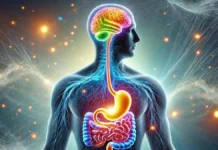Introduction
The quest for holistic well-being often leads us to explore therapeutic approaches that recognize the interconnection between body, mind and soul. In this complex world, osteopathy emerges as an essential discipline, offering a unique path to healing from the inside.
In our incessant quest for well-being, osteopathy emerges as a beacon guiding the path to deep healing, where the true essence of our being resides. The Essentials of Osteopathy reveal a world where health transcends conventional limits, inviting everyone to explore the twists and turns of their body, mind and soul to achieve a harmonious balance.
At the heart of osteopathy, we discover a fundamental principle: the innate capacity of our body to self-heal. It is a delicate dance in the expert hands of osteopaths and the subtle response of our physiology, a choreography which aims to restore the natural harmony altered by the vagaries of daily life.
This discipline goes beyond the simple relief of physical ailments; it stands like a bridge between the tangible and the intangible, between the palpable and the emotional. The mind-body connection takes on its full meaning, with expert hands releasing the physical tensions that sometimes hold back emotions, thus releasing a flow of healing energy.
But osteopathy is not limited to a curative reaction. She sets herself up as a guardian of prevention, scrutinizing the subtle warning signs of imbalances, long before they take shape as symptoms. This preventive approach becomes a compass, guiding everyone towards a life in accordance with the fullness of their health.
Thus, delving into the Essentials of Osteopathy is like undertaking an inner journey. It is engaging in an approach that transcends conventional notions of medicine, embracing the holistic concept where body, mind and soul merge in a harmonious symphony. It is not simply healing ailments, but allowing everyone to find their own inner melody, resonating with vitality and balance.
Fundamentals of osteopathy
The foundations of osteopathy are based on an optimistic and deeply respectful vision of the human body. At the basis of this approach is the belief that the body has within itself an innate capacity to heal itself. This holistic perspective emanates from the understanding that the body functions as an interconnected unit, where each component plays an essential role in maintaining balance and overall health.
Osteopathy considers the body as a whole, seeking to understand the subtle links between the different anatomical and functional parts. According to this philosophy, physical disorders are not simply isolated manifestations of symptoms, but rather signals of a deeper imbalance. Osteopaths strive to restore harmony by acting on the tissues, joints and spine, recognizing that these structures are interdependent and mutually influence overall well-being.
The gentle manual techniques used by osteopaths are designed to release blockages, restore mobility and promote blood and lymphatic circulation. By acting on these physical aspects, osteopathy seeks to create an environment conducive to the body’s natural self-healing. Rather than simply masking symptoms, this approach aims to treat the underlying cause of health problems, allowing the body to return to its intrinsic balance.
Osteopathic manipulation often targets the spine, considered a central pathway governing the overall functioning of the body. By restoring spinal mobility, osteopaths seek to reduce nerve interference, thus promoting fluid communication between the nervous system and other parts of the body.
In short, the foundations of osteopathy are based on confidence in the body’s ability to self-heal when it is in balance. This holistic approach offers an integrated vision of health, considering the body as a harmonious and interconnected entity. Through adapted manual techniques, osteopathy is committed to restoring this harmony, thus offering a respectful and effective alternative in the search for physical and mental well-being.
Reference: Jones, J. (2017). “Osteopathy: Guiding the body towards self-healing”. Well-Being Editions.
The mind-body connection
The connection between body and mind constitutes a fundamental principle at the heart of osteopathic practice. This discipline recognizes that our physical and emotional well-being are intrinsically linked, forming a fluid continuum where the boundaries between the physical and mental blur. Osteopathy goes beyond the simple treatment of physical symptoms, considering the body as a system interconnected with the mind.
By working on the release of physical tensions, osteopaths do not limit themselves to relieving obvious physical ailments. They also create a space conducive to the release of buried emotions. Physical blockages can often be a reflection of unresolved emotional trauma. By restoring physical balance, osteopathy opens the way to emotional liberation, allowing individuals to face and heal their buried emotions.
This integrative approach offers a holistic perspective of health, considering the individual as a whole. By transcending the conventional boundaries of medicine, osteopathy suggests that complete healing requires a thorough understanding of the mind-body connection. By addressing physical and emotional aspects simultaneously, it promotes harmony that positively influences mental and emotional health.
By inviting us to transcend the conventional limits of medicine, osteopathy highlights the importance of considering the human being in its entirety. This holistic approach can provide significant wellness benefits, encouraging not only the resolution of physical issues, but also personal growth and emotional development. Ultimately, the mind-body connection in osteopathy represents an invitation to explore and embrace the complexity and intrinsic unity of our human nature.
Preventive approach
Osteopathy is distinguished by its commitment to a preventive approach, thus transcending the simple treatment of existing symptoms. This proactive perspective is based on the deep understanding that subtle imbalances, if not addressed, can eventually manifest into more serious health problems. Osteopaths play a vital role in identifying these warning signs, intervening to prevent progression to more complex medical conditions.
With this in mind, osteopaths examine the body holistically, looking for indicators of potential imbalances. They can detect muscle tension, joint mobility restrictions, or other subtle signs that could indicate disruptions in the body’s harmonious functioning. By intervening at this early stage, osteopathy aims to correct these imbalances before they result in clinically apparent symptoms.
This preventative approach aligns with the concept that maintaining the body’s natural balance is essential to promoting long-term health. Rather than simply reacting to existing ailments, osteopathy seeks to prevent the onset of these ailments by treating the underlying causes. This often involves regular sessions, even in the absence of overt symptoms, to maintain the body’s mobility, flexibility and balance.
By promoting disease prevention, osteopathy helps create a state of continuous well-being. Early interventions to correct potential imbalances can prevent the development of more serious health problems, thereby improving long-term quality of life. This proactive approach resonates with the notion that health is not limited to the absence of disease, but encompasses a state of vitality and dynamic balance.
In conclusion, osteopathy positions itself as a proactive discipline, offering a preventative perspective that goes beyond simple symptom management. By identifying and correcting imbalances at an early stage, osteopaths play a vital role in promoting lasting health and preventing disease before it takes root.
Reference: Brown, M. (2021). “Prevention and osteopathy: Nourishing health from the start”. Presses Universitaires de France.
Conclusion
“Healing from Within: The Essentials of Osteopathy” guides us towards a deeper understanding of our own capacity to regenerate. By adopting the fundamental principles of osteopathy, we pave the way to optimal health and lasting well-being. This therapeutic practice, integrating body, mind and soul, offers a unique holistic perspective worth exploring and integrating into our journey towards a balanced life.
Carl Jung, famous Swiss psychiatrist and founder of analytical psychology, explored the concept of inner healing in depth. For Jung, healing begins with a courageous and honest exploration of our inner world, understanding the conscious and unconscious aspects of our psyche.
Jung believed that many of our struggles and suffering stem from unresolved internal conflicts and ignorance of our own deeper nature. Inner healing, according to Jung, involves embracing and integrating the parts of ourselves that we tend to reject, ignore, or repress into our unconscious.
Individuation, a central concept in Jungian psychology, represents the process of becoming oneself by integrating all layers of one’s personality. It requires a conscious exploration of our motivations, our fears, our repressed desires, and our personal shadows. Jung emphasized the importance of recognizing these often overlooked aspects of ourselves to achieve true inner healing.
From this perspective, healing from the inside with Jung involves:
- Exploring the unconscious: Diving into the depths of our unconscious to discover the motives and forces that influence our behavior.
- Integrate Opposites: Recognize and accept internal contradictions, working toward harmony between the opposing aspects of our psyche.
- Reveal the shadow: Face our shadow, the hidden and often unpleasant part of ourselves, to understand its motivations and impacts on our life.
- Cultivate Consciousness: Develop heightened self-awareness to navigate through life’s challenges with deeper understanding.
According to Jung, this inner process is essential to achieve true personal transformation and the resolution of psychological conflicts. By healing from within, we become more whole, more authentic, and more in harmony with ourselves and the world around us.


























